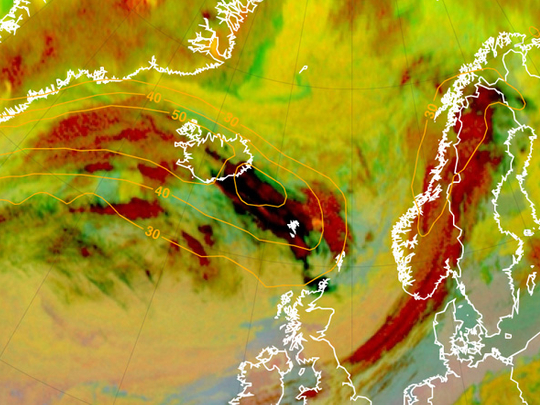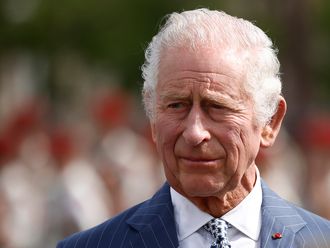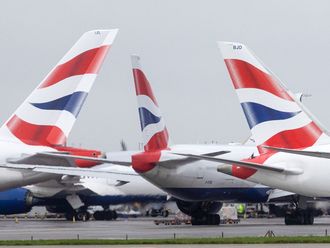
London: Britain extended a ban on most non-emergency flights in its airspace by six hours to 1800 GMT Friday due to ash from a volcanic eruption in Iceland, air traffic authorities said.
The enormous ash cloud from an Icelandic volcano is causing major flight disruption in northern Europe. Officials say it could take days for the skies to clear.
List of UAE flights affected today
The cloud, floating kilometers above Earth and capable of knocking out jet engines, meant that non-emergency flights in Britain were canceled Thursday. Ireland, Denmark, Norway, Sweden, Finland and Belgium also closed their air space. France shut down 24 airports, and Germany's Berlin and Hamburg were shut.
In pictures: Volcano erupts in Iceland
Britain's air traffic service said early Friday it was extending a ban on most air traffic until 7 p.m. local time Friday, but flights to Scotland and Northern Ireland, and North Atlantic flights to and from Glasgow, Prestwick and Belfast airports may be allowed until 1 p.m. local time.
Blast could last 'long time': expert
The powerful volcanic eruption in Iceland, spewing clouds of ash that disrupted air traffic across northern Europe Thursday, could last "a long time," an Icelandic geophysicist said.
"It is very variable how long these eruptions last. Anywhere from a few days to over a year," Magnus Tumi Gudmundsson, a professor of geophysics and civil protection advisor, told AFP.
"Judging from the intensity of this one, it could last a long time," he added.
Between 700 and 800 people were evacuated from their homes in the remote, lightly populated area 125 kilometres (75 miles) east of Reykjavik, as melted glacier water caused severe flooding.
"There were more than 250 metres (820 feet) of thick ice on top of the crater. That quickly melted, causing massive flooding which caused some damage yesterday," Gudmundsson said.
Most of the evacuees had been allowed to return home.
"The initial danger of major flash-flooding has subsided, and we felt there would be time to warn people if the danger increased," he said, adding however that about 50 people living closest to the volcano had not been allowed to go back.
Last month, the first eruption at the Eyjafjallajokull glacier briefly forced 600 people from their homes in the same area.
That eruption, the first under that glacier since 1823 and Iceland's first since 2004, gushed lava for just over three weeks and ended Tuesday, hours before the second one occurred.
"The last volcano did not pose any hazard ... But this one erupted in the main (Eyjafjallajokull) crater and it is much more powerful," Gudmundsson said.
"It has been going on for more than 24 hours and is an explosive eruption," he added.
No lava had emerged from the latest volcano eruption because there was still ice and water in the crater, according to the geophysicist.
"When the water and magma mix it becomes explosive and that's why we have all this ash that is causing disruptions," he said.
Most of northern Europe's airspace was shut down Thursday because of the risk from volcanic ash, which can damage aircraft engines as well as cut visibility.
All Icelandic airports were open however and there were few air traffic delays in the country, according to the Icelandic Airport Authority.












